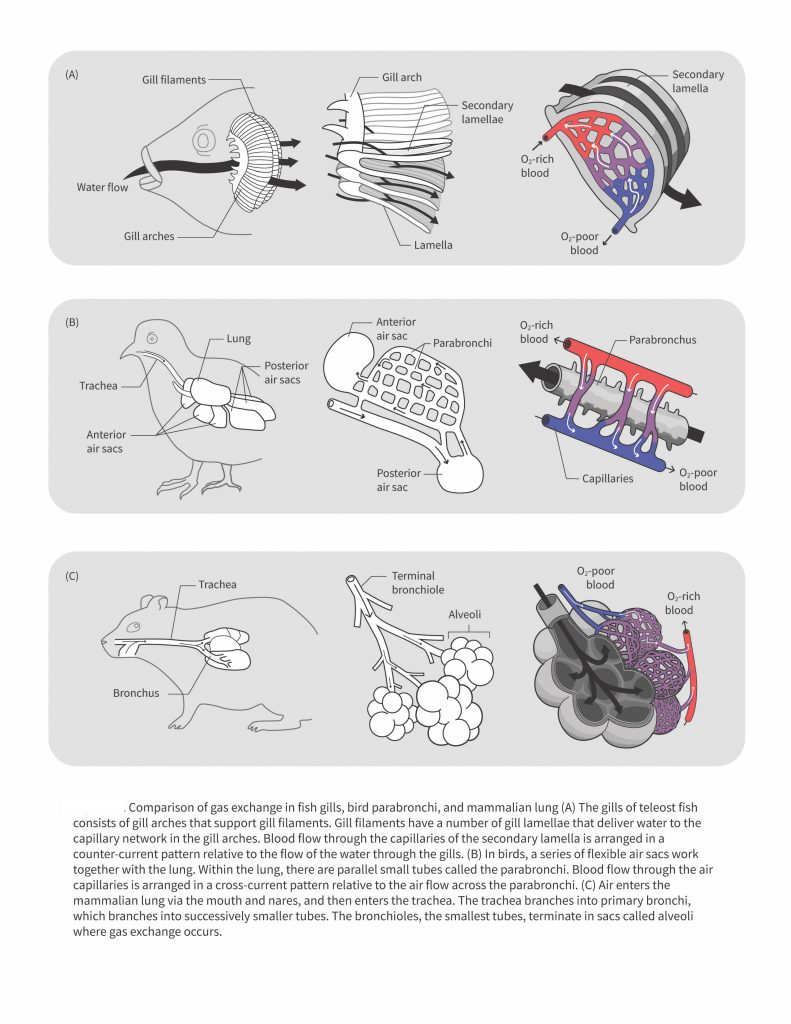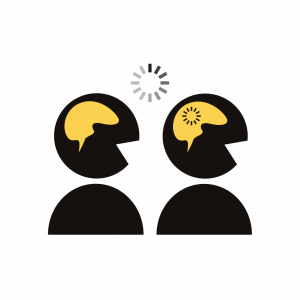2.3 – Gaseous Exchange Mechanisms
 |
2.4. Compare counter- and crosscurrent exchange using specific respiratory system examples. |
Most gas exchange in the respiratory system structures in animals takes place in counter-current arrangement. In short, this means that the medium that delivers the oxygen (air or water) and the structures that the oxygen is delivered to are moving in directions opposite to one another. An example of this is a fish gill system (Figure 2.12). Another way that gas exchange can happen is through cross-current exchange in which the air carrying the oxygen is moving through the respiratory structures (parabronchi), which are positined perpendicular to the movement of blood around the parabronchi. (Figure 2.12). Please note that in the figure below, the oxygen-rich and oxygen-poor blood flow direction with respect to the secondary lamellae should be reversed (Figure 2.12a). Additonally, the flow of blood within the barabronchus (Figure 2.12b, direction flow should be from oxygen-poor to oxygen-rich blood). The open textbook developers and author are currently working on updating this figure.

 |
Question 2.9.
Which one do you think is an example of counter-current and which one is an example of crosscurrent exchange? |

